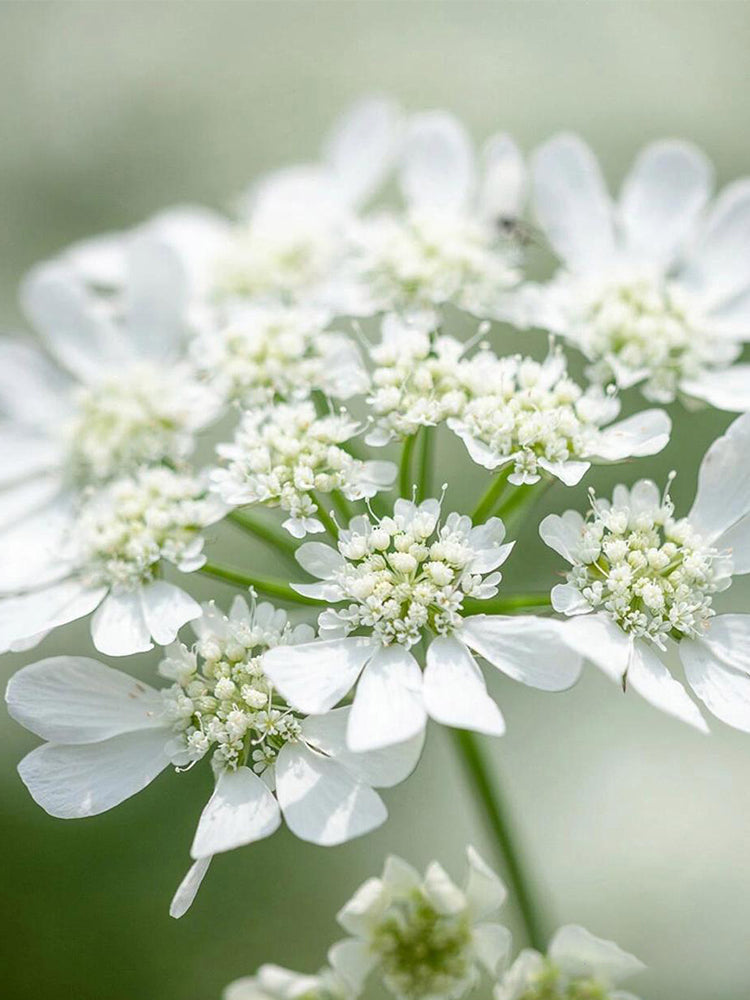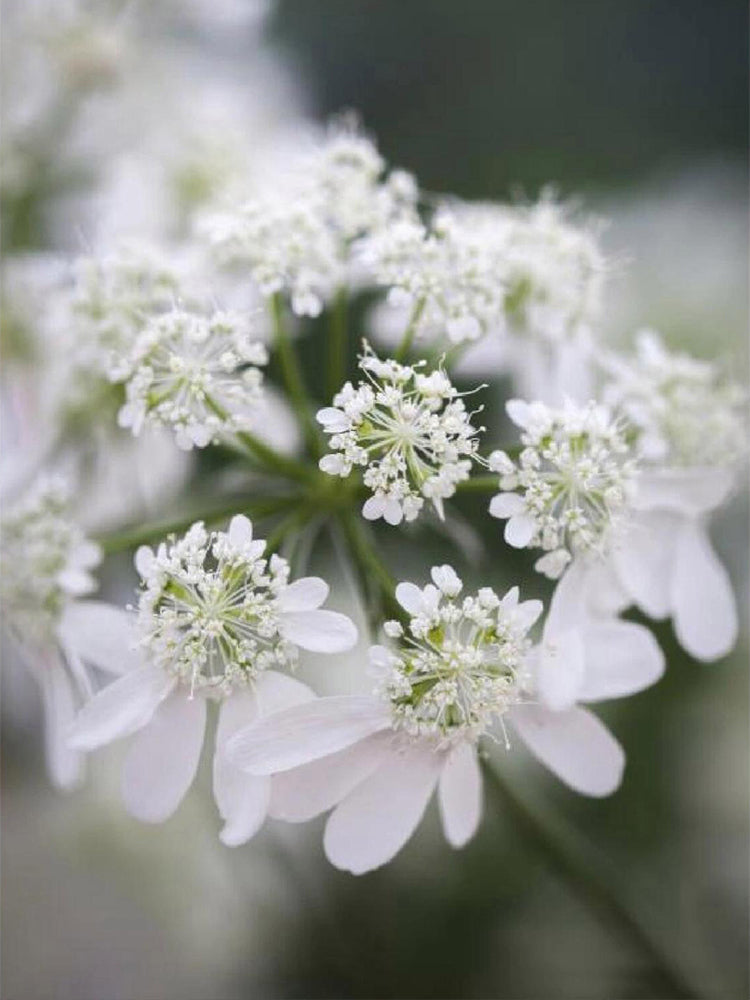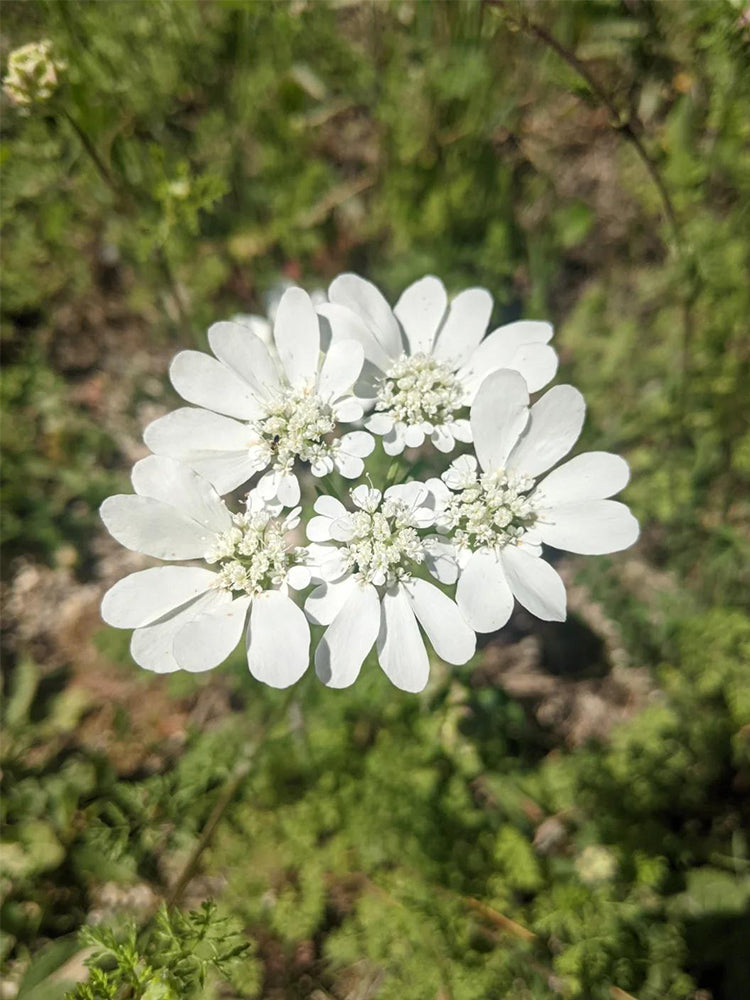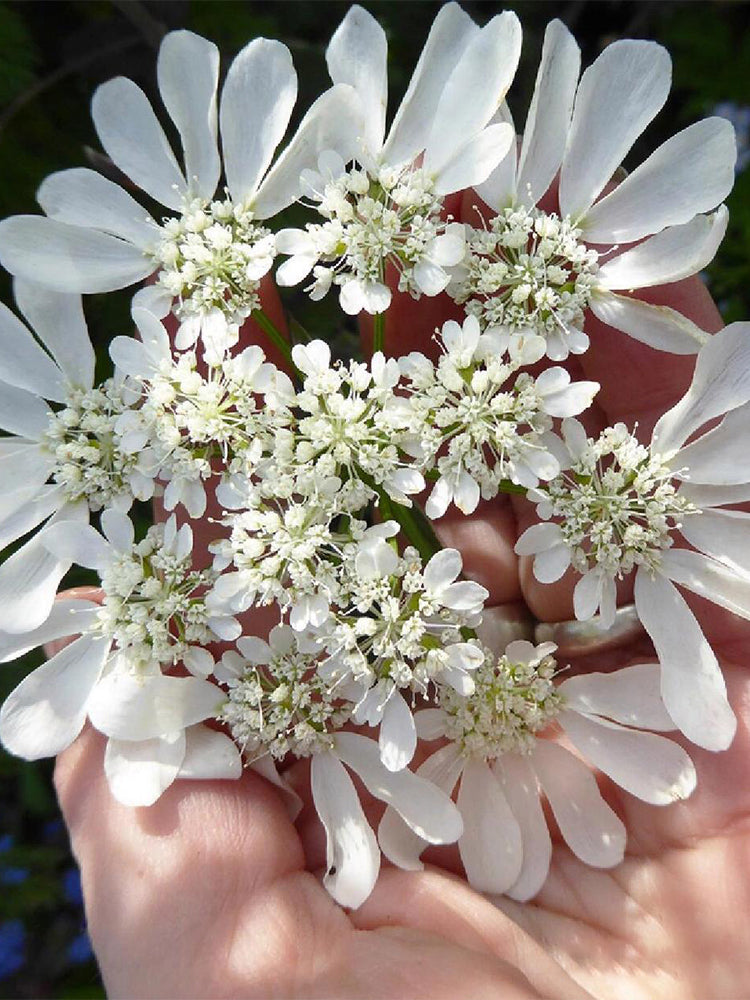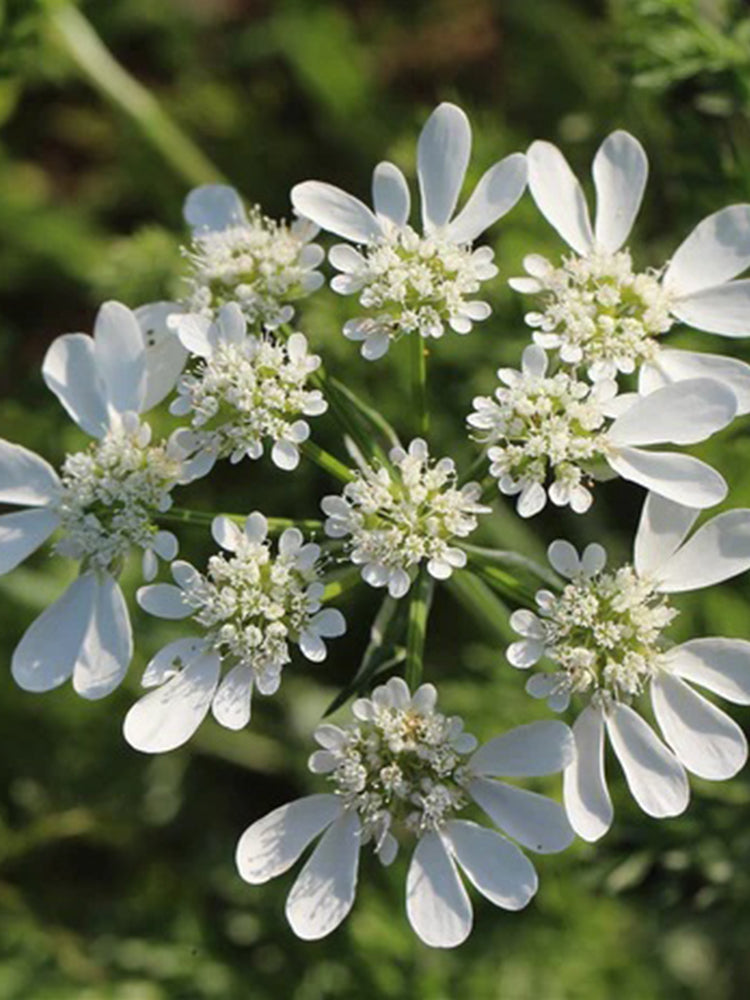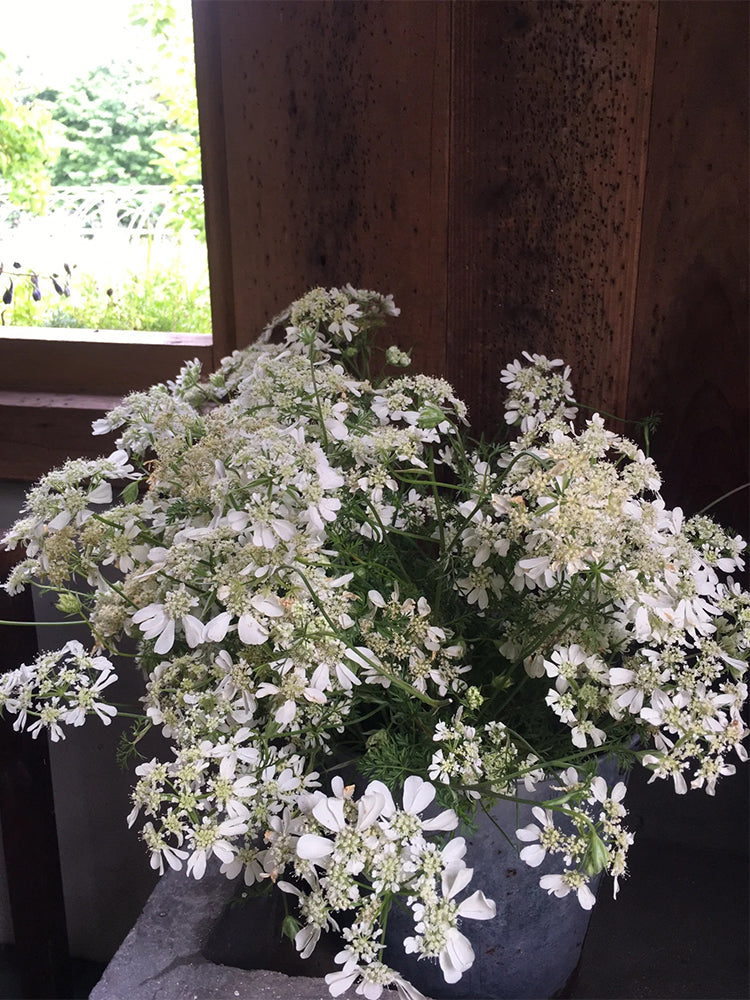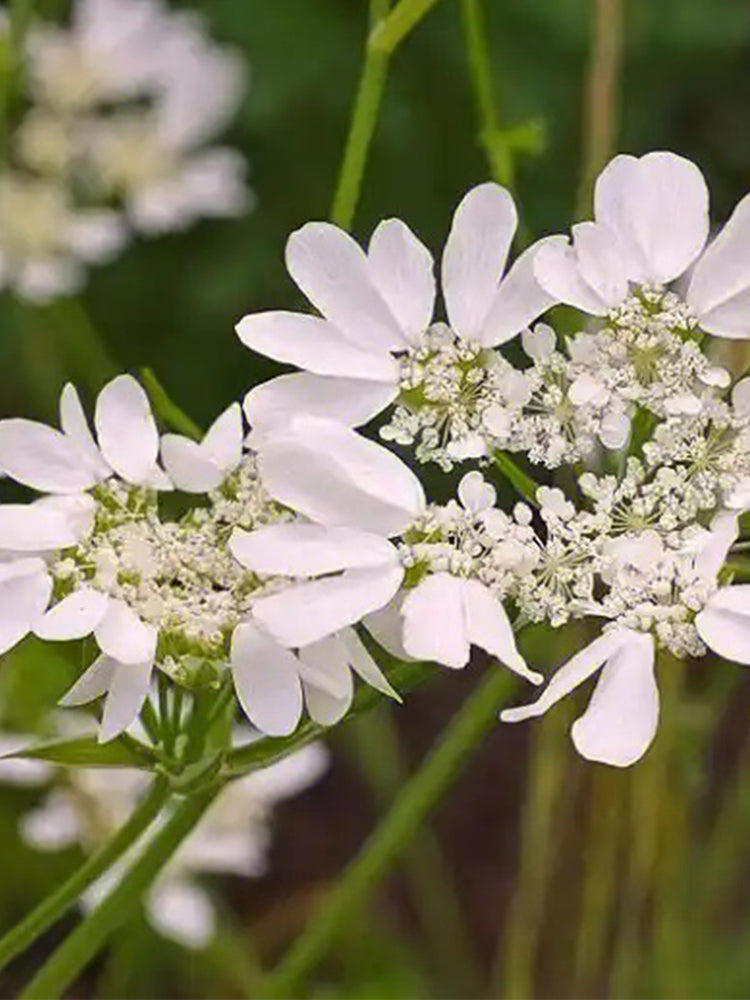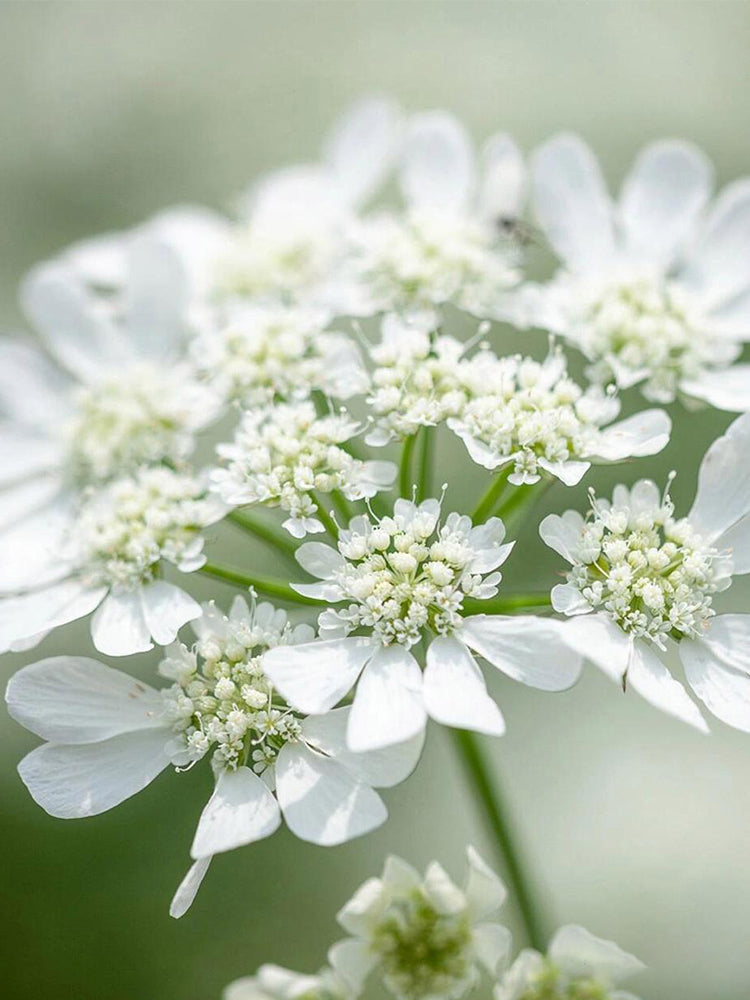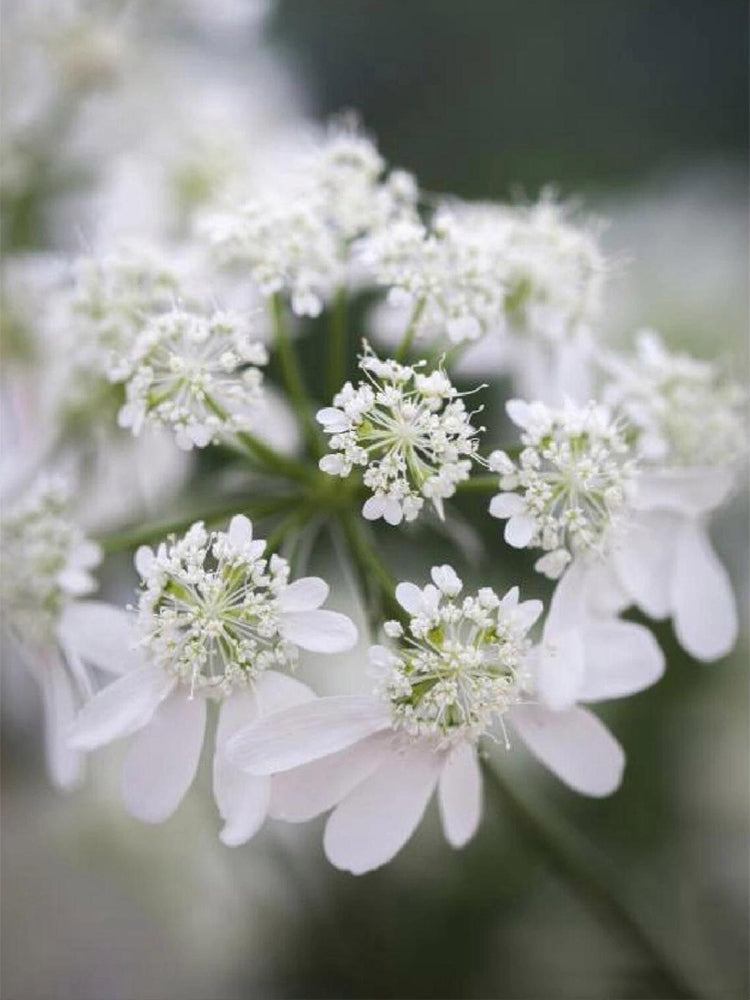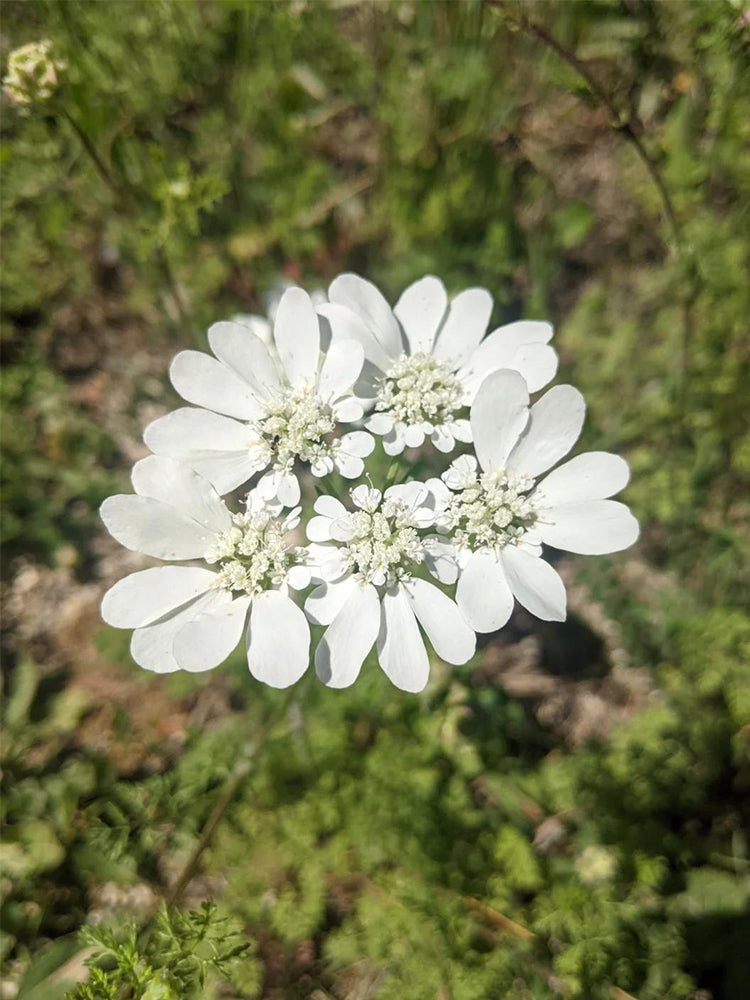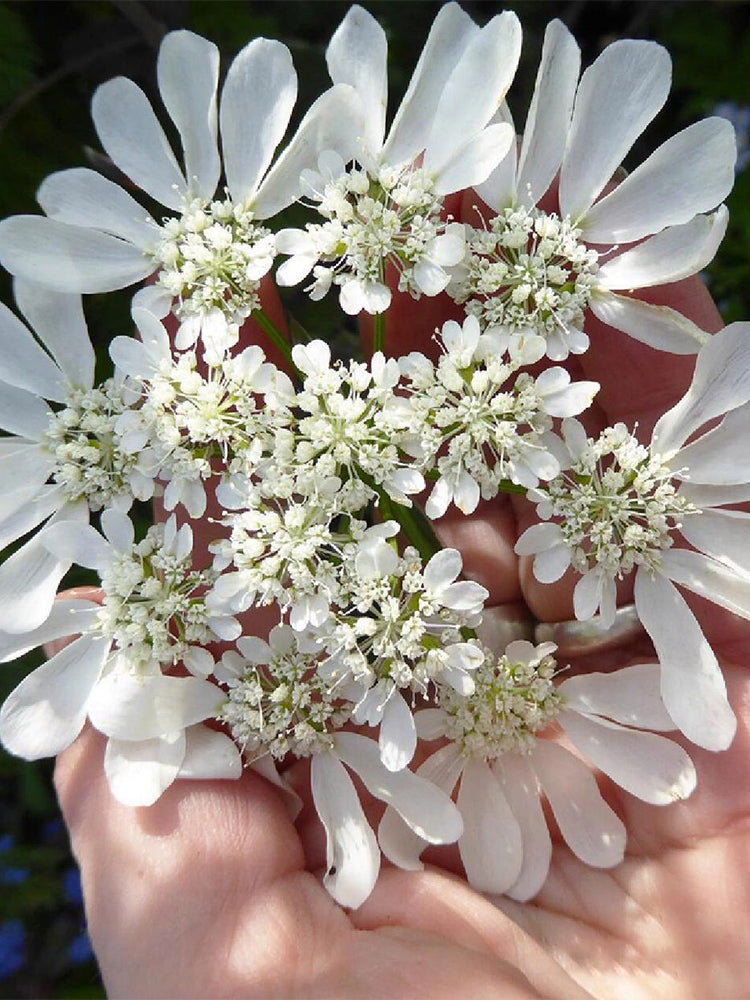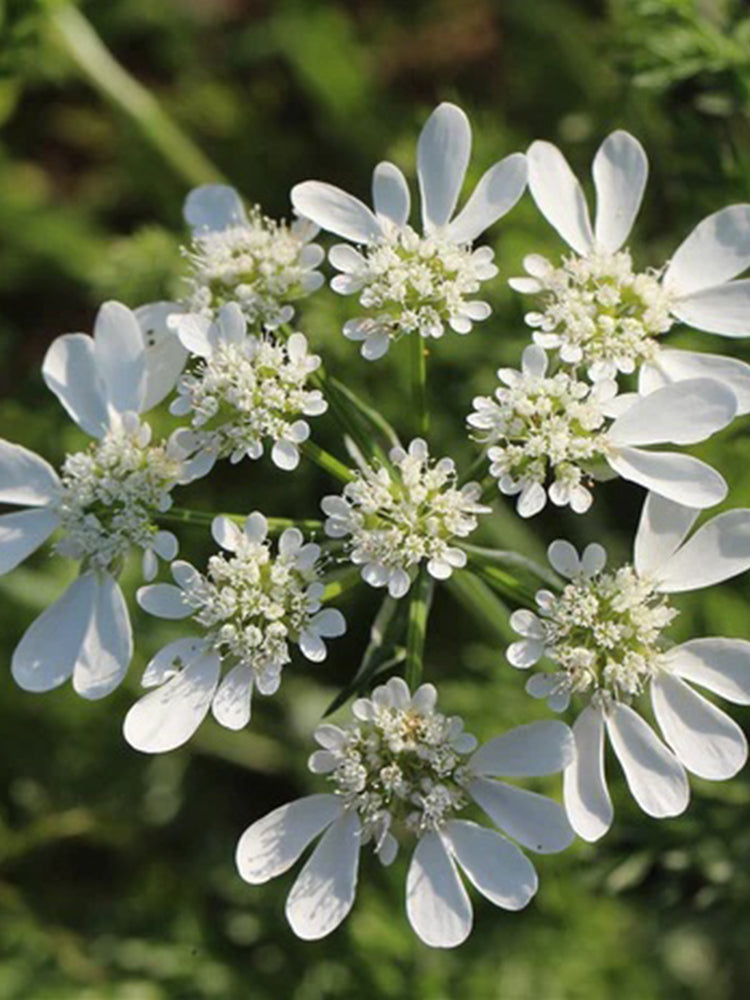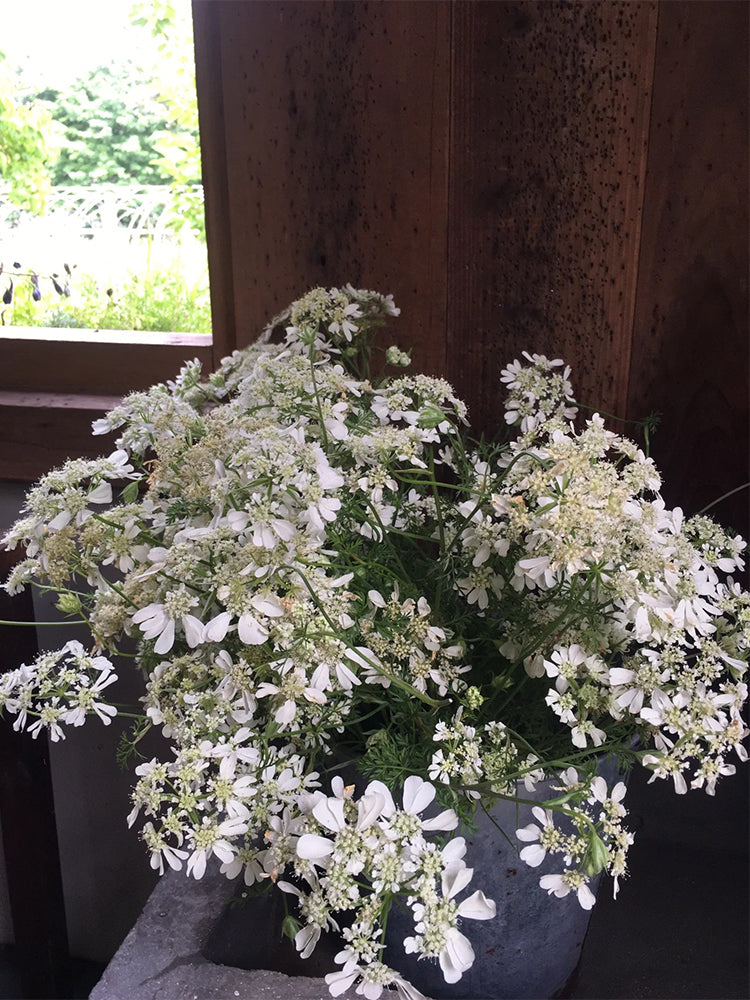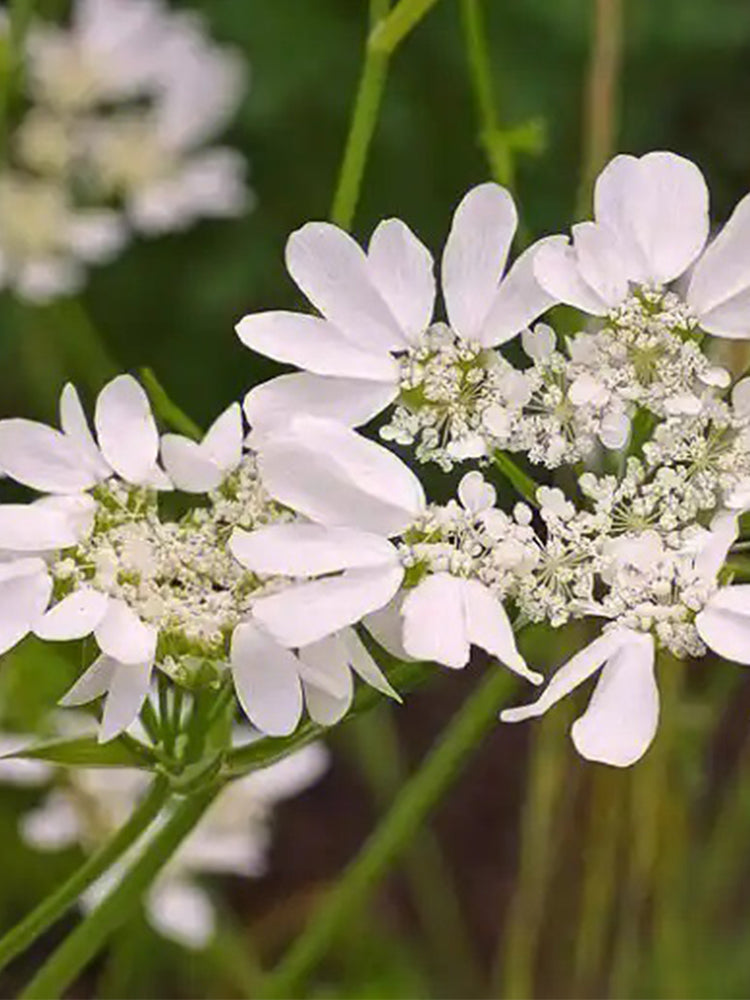BELLFARM
White Laceflower (Orlaya grandiflora)
Sale
Sold out
Regular price
$4.99 USD
Regular price
$8.99 USD
Sale price
$4.99 USD
Unit price
per
Couldn't load pickup availability
-
5-14 Days delivery.
-
Ship out within 24 hours.
Main characteristics of the species:
- Lace flower (scientific name Orlaya grandiflora) belongs to the genus Orlaya in the family Apiaceae and is native to the Mediterranean coast and North Africa. Its inflorescence is in a compound umbel shape, about 5-10 cm in diameter. With peripheral petals significantly enlarged, the edge presents an irregular notch, looking like lace, up to 1-2 cm in diameter. There are densely growing fine white flowers in the center, and a few of them are slightly light pink or light green. The plant has slender and erect culms, 30-60 cm high, with many branches, and the lobes of the pinnately divided leaf blades are long and supple. The fruit is a cremocarp with spiny protrusions on the surface.
- This variety prefers a cool and dry climate, is cold hardy but intolerant of heat and humidity. It is suitable for an environment ranging from full sun to semi-shade and well-drained sandy soil. It flowers in summer and can be sown in spring and autumn (in cold areas, spring sowing is recommended). It is suitable for decorating flower borders, gardens with a wild feel or rock gardens, and can also be used as flower materials for vase arrangement (with a freshness period of about 5-7 days). As it is difficult to grow this variety, you need to pay attention to preventing waterlogging during the rainy season, providing shade and good ventilation in summer, and harvesting the seeds at the right time to retain its ability to self-seed.
- Lace flower (scientific name Orlaya grandiflora) belongs to the genus Orlaya in the family Apiaceae and is native to the Mediterranean coast and North Africa. Its inflorescence is in a compound umbel shape, about 5-10 cm in diameter. With peripheral petals significantly enlarged, the edge presents an irregular notch, looking like lace, up to 1-2 cm in diameter. There are densely growing fine white flowers in the center, and a few of them are slightly light pink or light green. The plant has slender and erect culms, 30-60 cm high, with many branches, and the lobes of the pinnately divided leaf blades are long and supple. The fruit is a cremocarp with spiny protrusions on the surface.
- This variety prefers a cool and dry climate, is cold hardy but intolerant of heat and humidity. It is suitable for an environment ranging from full sun to semi-shade and well-drained sandy soil. It flowers in summer and can be sown in spring and autumn (in cold areas, spring sowing is recommended). It is suitable for decorating flower borders, gardens with a wild feel or rock gardens, and can also be used as flower materials for vase arrangement (with a freshness period of about 5-7 days). As it is difficult to grow this variety, you need to pay attention to preventing waterlogging during the rainy season, providing shade and good ventilation in summer, and harvesting the seeds at the right time to retain its ability to self-seed.
